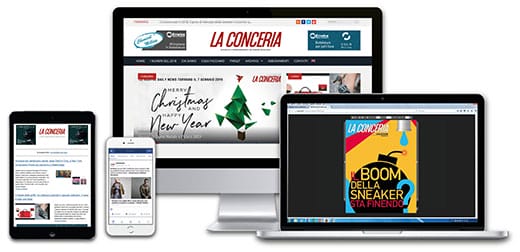“I wouldn’t call it a crisis: I think it’s a transformation”. Matteo Mastrotto, CEO of Rino Mastrotto, is quick to set the tone when asked about the current economic downturn. And when it comes to “transformation”, his group has certainly led the way — first by shifting from a tanning group to an integrated supply chain, and from “supplier” to brand; then by expanding beyond tanning to include Tessitura Oreste Mariani, Imatex, and Mapel Group. The group also patented a cutting-edge, ultra-sustainable tanning process (Hearth) and finalised a major deal with Prada, which acquired a 10% stake in Rino Mastrotto and contributed 100% ownership of Conceria Superior and Tannerie Limoges. In many ways, this feels more like a revolution than a simple change, as Mastrotto explains in this interview.
The deal with Prada
What’s the strategic thinking behind the partnership with Prada?
Prada has always been an excellent client of ours; we’ve worked together for many years. This is a strategic operation for both sides. For them, it’s about securing access to high-quality raw materials. For us, it strengthens an already solid relationship.
Will the commercial model of Conceria Superior and Tannerie Limoges change?
Superior and Limoges have always worked with a broad range of fashion clients and will continue to do so. Prada works with them, just as they do with our other tanneries in Veneto and Tuscany. But both will remain commercial entities with a 360-degree client base.
What does this mean for your production offer?
Superior gives us a push in the high-end market, which is crucial at a time when demand for top-quality leather is rising. Limoges allows us to add lambskin to our portfolio — an important segment that diversifies us further, just as we did with textiles and ribbons. Entering the lambskin segment is a clear act of diversification.
Our recipe for change
How have you managed the integration of all these new businesses?
We’ve done a great job with acquisitions so far. Now the goal is growth. We’ve worked hard to ensure these companies are fully integrated — true aggregation is necessary to reach our goals. We’ve already developed some products that combine the strengths of different companies, such as pairing leather with textiles and ribbons. This helps us present a more complete, 360-degree service to clients — something increasingly essential.
Are more acquisitions on the horizon?
We’re in a period of transition and change. I believe we’re returning to real fashion — with more components, greater complexity, more colours. For now, we need to consolidate everything we’ve acquired. Once that’s in place, we’ll definitely look at integrating new companies — ones that are strategically valuable for us and that enhance what we can offer clients. Everything we do is geared towards providing the best possible service. We want to offer a complete supply chain because right now, clients need reliability, service, and product quality. And we can now deliver on that, thanks to the contributions of the other entrepreneurs who’ve joined the group and work with different materials.
More quality, less quantity
What’s happening in fashion and luxury?
I wouldn’t call it a crisis — it’s a transformation. A strong one, yes, but normal in a world like fashion. If anything, we became almost too industrial over the past few years. Now, we’re seeing the comeback of leathers and treatments we hadn’t seen in 20 years. It’s a tough moment, but it’s pushing us back to doing “real work”. That’s the direction I see for the next few years.
Will production volumes decrease?
Yes, I believe so. There will be more quality and less quantity. We must focus even more on product excellence. Sustainability will remain a top priority — hence our Hearth process. This patented tanning method reduces water usage by 91% and chemical use by 23% during retanning, dyeing, and fatliquoring. We’re seeing huge interest, partly because we presented it at just the right time — when clients are more open to innovation due to the current slowdown. If we’d launched it two years ago, at the peak of the post-Covid rebound, we’d have had interest, but not at this level.
Passion for leather
What does it mean today to work with leather?
It means constant learning — and the beauty of leather is that it fuels passion. With leather, the journey never ends. There’s always an opportunity to create something new. That’s why it’s a source of daily enthusiasm. Sure, the job is hard and the challenges are constant, but that’s a good thing — otherwise we’d all stagnate.
How does this passion translate into the product?
By helping people fall in love with the material again. Creating objects that make you stop and say: I want this because I love it. That’s our mission — to help people fall back in love: us, our clients, with products made “with heart”. That way, we transmit beauty, positivity, and sensuality. That’s what the French call savoir-faire. Then it’s the clients’ turn to make their customers fall in love. That’s what this transformation is really about.
So, what now?
The market’s changing, and often we end up back where we started. Three years ago, we thought we’d reached the top. Now, we’ve crossed over the peak, and it’s time to shoulder our backpacks and start again. Don’t fear the crisis — it’s a moment for reflection. I believe we’re incredibly resilient in Italy, and the key now is to stay focused on our business. Forget what’s happening elsewhere. I recently read an interview with Axel Dumas, CEO of Hermès. He said: “We’re successful because we don’t think about others. We’re only focused on ourselves”. That’s how entrepreneurs should be — committed to what they do best and staying the course. Listening to everyone else is a waste of energy and resources.











